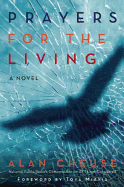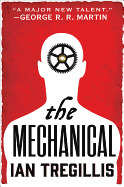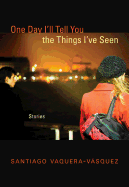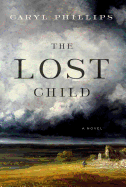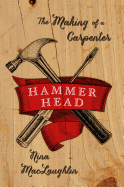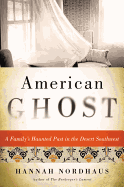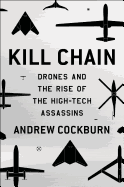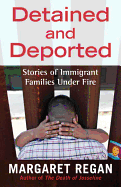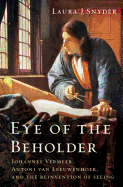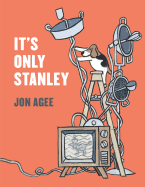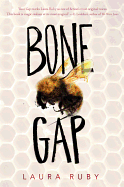 Lynne Truss started her career as a literary editor. She's been a journalist, a television and book critic and has written extensively for the page, stage, radio and screen. Her book Get Her Off the Pitch details the four years she spent as a sportswriter for the Times (London), and The Lynne Truss Treasury is a compilation of her humorous columns and three of her comic novels. Truss is probably best known for Eats, Shoots & Leaves, a mega-bestseller that made people care about punctuation and also spawned several illustrated children's books on the topic. Truss has a fondness for gothic fiction and the work of British poet Alfred, Lord Tennyson. Her latest, Cat Out of Hell, is a mystery novel infused with humor and supernatural elements that focuses on talking cats, their many lives and the possibilities of their retributive behaviors.
Lynne Truss started her career as a literary editor. She's been a journalist, a television and book critic and has written extensively for the page, stage, radio and screen. Her book Get Her Off the Pitch details the four years she spent as a sportswriter for the Times (London), and The Lynne Truss Treasury is a compilation of her humorous columns and three of her comic novels. Truss is probably best known for Eats, Shoots & Leaves, a mega-bestseller that made people care about punctuation and also spawned several illustrated children's books on the topic. Truss has a fondness for gothic fiction and the work of British poet Alfred, Lord Tennyson. Her latest, Cat Out of Hell, is a mystery novel infused with humor and supernatural elements that focuses on talking cats, their many lives and the possibilities of their retributive behaviors.
Why return to fiction? And why a mystery novel?
In the 1990s, I wrote three novels in about six years, and my intention was to keep making a living from journalism while writing novels. Then a number of things happened around the year 2000, mainly that my sister died, and I gave up my job. For a while I concentrated on making radio programmes (mainly comedy) for the BBC. One of these programmes was about punctuation, and this led directly to writing Eats, Shoots & Leaves. The reception was truly phenomenal--but suddenly I was known as a nonfiction writer! All along I've been continuing to write stories and plays and dramatic comedies, so when I was commissioned to write a gothic novella for the Hammer imprint in the U.K., it made me very happy. I had written short stories in the comic-gothic mode. I like dealing in the slightly surreal. It seemed like a very natural next step to write a comic-gothic novel.
How did the story and themes arise in Cat Out of Hell?
I knew from the start that it would be about talking cats. But when I started the book, all I was clear about was the structure. I wanted to start with a man on his own, poring over a folder of documents, pictures, sound recordings and so on, and being drawn into a mystery that he thinks does not concern him. So the first section would be the documents; the second would be narration; the third would take place in the present tense (e-mail exchanges, heightening the tension); the last would be narration of the dramatic climax. Once I had the structure, the story evolved to fit it. I'm working on a follow-up book at the moment, and the structure is different, but is still crucial to what kind of story will be told. As for the story and themes in Cat Out of Hell, the "many lives" element was one of several aspects of cat lore that seemed to offer gruesome possibilities! I'm quite pleased with my explanation for the belief that cats have nine lives. I also hope that cat owners will feel differently about a few other behaviours (such as purring), but I mustn't give too much away.
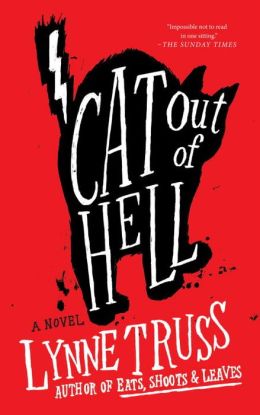 What role have cats played (or do play) in your domestic life?
What role have cats played (or do play) in your domestic life?
I had two, much-beloved cats for over 20 years, and I used to write about them quite a lot! I loved their indifference. One of my favourite columns began, "No Valentines from the cats again." After they died, I waited about 18 months and then took in two rescue cats, which was a bit of a disaster. They were semi-feral, I think. They didn't miaow. They didn't like to be stroked. They looked down at me from the top of the stairs like creatures from another planet. I'm sure the experience of having these cats for a couple of years fed into Cat Out of Hell! (Luckily, someone actually asked to have them, and I couldn't have been happier to see them go.)
But anyone who lives with cats knows the mystique they have. However close you get to them, they keep a lot in reserve. And the intelligence of animals is always fascinating. They are clever enough to recognise the sound of your car, but not clever enough to understand that when you put them in a basket, you're not actually trying to kill them. I find cats funny, I suppose. I think you can tell that I love them from the way (in Cat Out of Hell) Alec admires the cat called Roger. The two cats, The Captain and Roger, represent the sort-of Id and Superego of cat nature. One is all instinct and violence; the other all intellect and wit.
Was Cat Out of Hell as much fun to write as it is to read?
All writing is scary to me. I wrote 24 episodes (in all) of a comic detective series for the radio here, and before each one I would have the internal debate: "I can't write this!" "Of course you can write this." "No, I can't write this." "But you're the only person who CAN write this." But you're right that in many ways writing Cat Out of Hell was just fun. There are passages that still make me laugh out loud--and they did delight me when I wrote them. It's a cliché that comic writing is a quite serious business--but it's true that it's a craft: it's about the timing, precise wording, and so on. You can buff it up. But writing in the comic mode isn't all craft; it's also about being alive to comic possibilities, and a funny idea popping into your head is sheer joy.
Your work certainly reflects how much you enjoy the craft of writing.
You would imagine that the enthusiasm would wear off, but in my case it really hasn't. Perhaps it's because I got going quite late (I was in my mid-30s when I wrote my first novel), I've always felt that it's a big privilege to be a writer. No one in my background had the luck that I've had. I was the first person in my family to go to university; the first not to have a boring job. Somehow I never forget that.
Gardening figures prominently in your comic novels, In One Lousy Free Packet of Seed and in Tennyson's Gift.
It's an odd thing. I have no special knowledge of botany, but I am terribly interested (thematically) in the idea of growth, so I think that's why I return to the subject of plants sometimes. When I started One Lousy Free Packet of Seed, I really wrestled with the idea of whether a comic character has to stay the same forever, or whether it can develop. So the idea of dormancy became a bit of a theme. I liked the idea of seeds--all that potential being contained in something so inert! As for the flower symbolism in Tennyson's Gift, it's in all Victorian art and poetry, so I took it on board. The fact that one of the little girls in Freshwater at the time was called Daisy (symbol of innocence) helped it all come together.
Will there be additional books featuring cats in your writing future?
I am currently writing about a demon kitten (for the next novel), and I get up each morning thinking, "I can't wait." I'm about 10,000 words in, and it's beginning to take shape, but I've got a lot of options still left open, such as: Will Roger return? --Kathleen Gerard, blogger at Reading Between the Lines
Lynne Truss: Dealing in the Slightly Surreal
 On May 2, some 400 independent bookstores nationwide will participate in the inaugural Independent Bookstore Day. Along with parties, author appearances and events, these stores will offer exclusive merchandise for the occasion, such as a literary tea towel set with quotes from Nora Ephron and Sherman Alexie; a signed print by Chris Ware; a boxed set (literally--a reusable tin) containing Shadow of the Wind, The Borrower, The Bookman's Tale and 84, Charing Cross Road; a Stephen King broadside from his new Finders Keepers; even a bunsie--a onesie with the "Guess How Much I Love to Read" bunny on the front.
On May 2, some 400 independent bookstores nationwide will participate in the inaugural Independent Bookstore Day. Along with parties, author appearances and events, these stores will offer exclusive merchandise for the occasion, such as a literary tea towel set with quotes from Nora Ephron and Sherman Alexie; a signed print by Chris Ware; a boxed set (literally--a reusable tin) containing Shadow of the Wind, The Borrower, The Bookman's Tale and 84, Charing Cross Road; a Stephen King broadside from his new Finders Keepers; even a bunsie--a onesie with the "Guess How Much I Love to Read" bunny on the front.



 What role have cats played (or do play) in your domestic life?
What role have cats played (or do play) in your domestic life? 